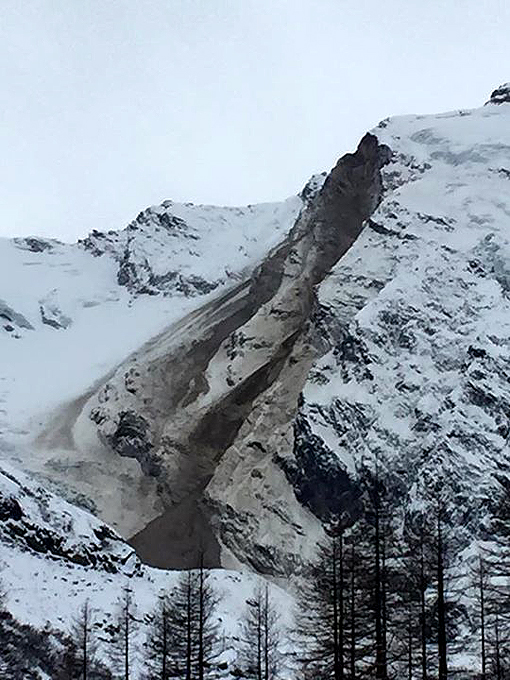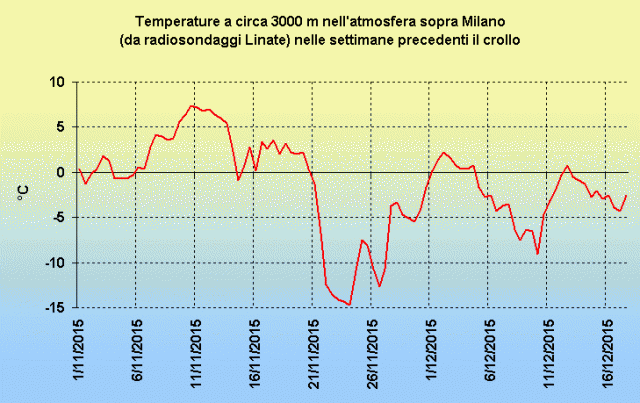22 January 2016
The Punta Tre Amici rockslide in Italy
Posted by Dave Petley
The Punta Tre Amici rockslide
On 16th December 2015 the Punta Tre Amici rockslide occurred on a rock slope on the flanks of Monte Rosa in northern Italy. The rockslide, which had a volume of about 200,000 cubic metres, was detected on a network of three seismometers, indicating that the main collapse occurred at about 8:25 pm local time. There is a very detailed description (in Italian), and lots of images, of this landslide on the Nimbus Web Glaciologia website. Google Translate does a fine job on the text, which is rendered quite clear. This is a post-event image of the Punta Tre Amici rockslide:-

Punta Tre Amici rockslide via Nimbus Web Glaciologia
.
The rockslide left the cliff in a quasi-stable state, and it has subsequently been subjected to repeated subsequent rockfall events (and avalanches, as the image above shows). This means that the rockfall scar and deposit has continued to evolve with time. Nimbus Web Glaciogia has this image of the landslide, taken on 8th January:

Punta Tre Amigi rockslide on 8th January 2015 via Nimbus Web Glaciologia and F. M. Cornaggia
.
The Nimbus Web Glaciologia article indicates that this is an area that has been subject to considerable slope instability in recent years. It also indicates that there might be an interesting temperature-related aspect to this rockslide. They provide this graph of temperatures in the days leading up to the rockfall event:

Temperatures in the period leading up to the Punta Tre Amici rockslide via Nimbus Web Glaciologia and SMI. Note that the temperature record is from Milan Linate airport
.
The Nimbus Web Glaciologia (translated by Google and then corrected by me) notes that:
The late fall 2015 in the Alps has been marked by persistent subtropical anticyclones, therefore exceptional mildness and lack of snowfall. In particular, a period of extreme warmth was observed in the days leading up to 10th November 10, with extremes never previously recorded at that time of year, with temperatures of about 7 ° C at about 3000 m in the free atmosphere above the Northern Italy and Monte Rosa, therefore with [ground temperature] well above 0° C and the likely presence of liquid water still in circulation to the portion of the detachment of the landslide (at about 3400 m). In late November, there was a temporary cold period (-15 ° C at 3000 m)…followed by milder weeks in December, but without reaching the extremes of the previous month, while there was a continued extraordinary lack of snow, limited to a few centimeters on the shady slopes.
It is well established that global warming is driving an increase in high elevation temperatures, and a dramatic increase in permafrost degradation and thus an increase in rockfalls, in mountain chains. This may well be yet another example. We will see many more in the years ahead.


 Dave Petley is the Vice-Chancellor of the University of Hull in the United Kingdom. His blog provides commentary and analysis of landslide events occurring worldwide, including the landslides themselves, latest research, and conferences and meetings.
Dave Petley is the Vice-Chancellor of the University of Hull in the United Kingdom. His blog provides commentary and analysis of landslide events occurring worldwide, including the landslides themselves, latest research, and conferences and meetings.